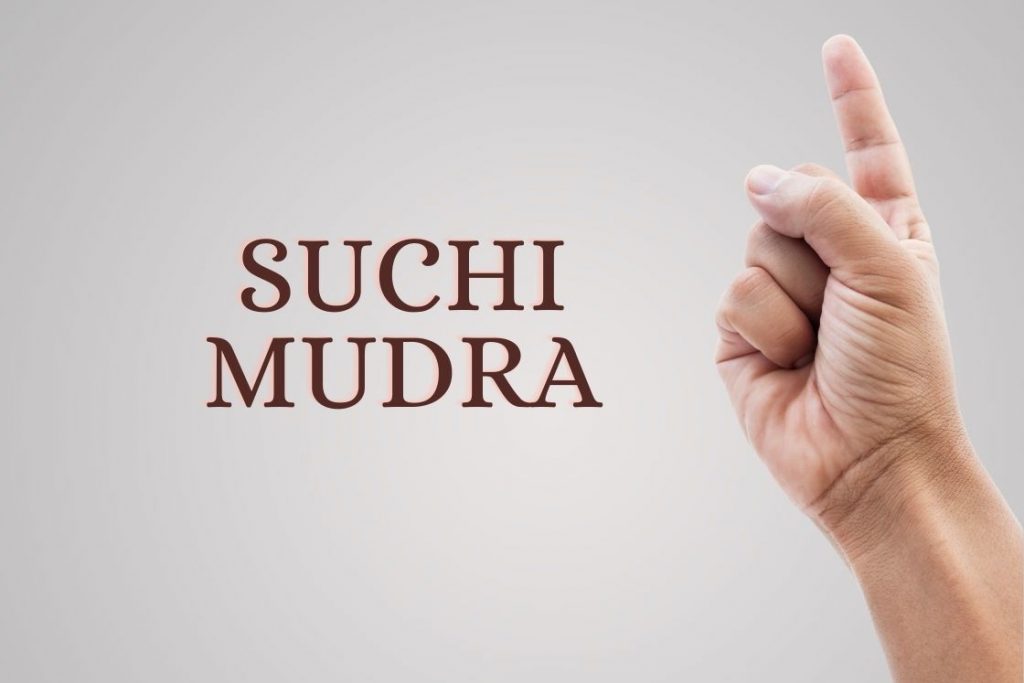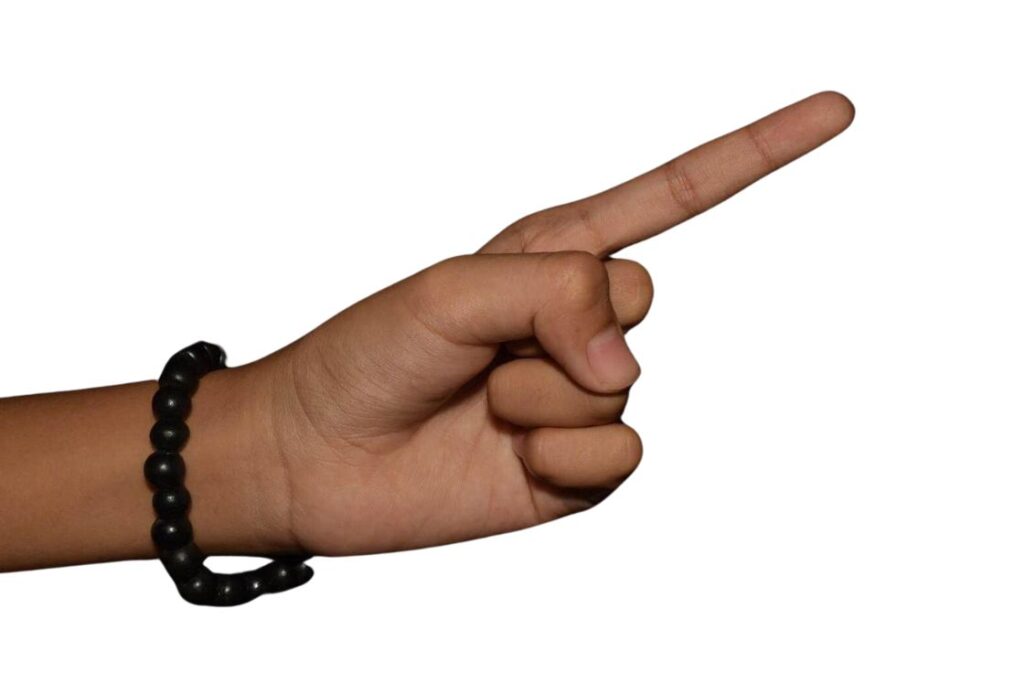
In the list of healing and therapeutic mudras, suchi mudra is one of the most beneficial in detoxification and cleansing the body, both physically and mentally. It is a mudra that promotes the elimination of waste.
Suchi mudra can be interpreted in a number of ways due to its formation. The index finger is kept straight while the rest of the fingers are formed in a fist. You perform the suchi mudra with one hand at a time.
Be it your digestive problems or mental problems, suchi mudra works on the mind-body-spirit as a whole to purify the body.
Meaning and Significance of Suchi Mudra
The word “suchi” has multiple interpretations. It can mean a sharp weapon, like a needle, or signify cleanliness and clarity in Ayurveda. In performing arts, dancers use this mudra to represent the oneness of God. In Hindu culture, Lord Brahma uses this mudra to express uniqueness.
The mudra also holds relevance in Hindu culture as Lord Brahma uses this mudra to say “I am unique”.
Whatever ways you may want to interpret it, there is no doubting its healing properties.
In suchi mudra, the index finger is stretched straight. In general index finger represents Vayu or air element hence it can also be used to balance the vata imbalances in the body. Thus, it reduces negative emotions or feelings like impatience, rage, possessiveness, and jealousy.
It is one of the easiest and simplest mudras to remove toxins from the mind and body.
How to Practice Suchi Mudra
The suchi mudra can be practiced in a seated, standing or supine position. As long as you are comfortable, relaxed and your body is in a symmetrical position. Warm up your fingers; quickly make fist and open up fingers. Do it a few times.
The most common seated positions are the easy pose (sukhasana), lotus pose (padmasana), hero pose (virasana), and thunderbolt pose (vajrasana). For a standing position, the mountain pose (tadasana) will be beneficial.
Let us see the steps.
- Sit in a comfortable seated position of your choice. Make sure your spine is straight and lengthened however you are relaxed.
- Keep your hands on your knees, palms facing upwards, and close your eyes.
- With your right hand, make a fist and bring it to the front of the chest or the heart chakra location.
- As you inhale, extend the index finger upwards and keep it firm. It should be straight so that you feel a slight pressure.
- Your left hand should remain opened or you can make vayu mudra with it.
- Hold this mudra for 6-8 breaths.
- Gently release the fist and bring the right hand to the knees. Relax both hands for 1 minute and then repeat the mudra with your left hand.
Best Practices for Suchi Mudra

- Ideal Time: Practice Suchi Mudra in the morning, preferably between 4 am and 6 am, when the mind is most focused and calm.
- Duration: Aim for 30-40 minutes daily. Split into shorter sessions of 10-15 minutes each if needed.
- Breathing: Incorporate thoracic breathing and mantra chanting to enhance focus and deepen the meditative experience.
- Visualization: Visualize yourself as a positive person who believes in giving and forgiving. Experience the joy and liberation from forgiving others and letting go of negative emotions.
- Constipation Relief: Practice Suchi Mudra at least four times a day for 10 minutes each session to alleviate severe constipation. It can be beneficial to include this at the beginning and end of your yoga routine.
- Gaze Technique: Bring your index finger in front of your eyes and gaze at the tip for 30 seconds to 1 minute. Relax your finger and close your eyes to enhance concentration and focus.
- Seated Position: If sitting on the ground is uncomfortable, use a chair. Place a cushion or a folded blanket under your knees and hips for added comfort.
- Lying Down: You can also practice Suchi Mudra while lying down on your bed.
Precautions and Contraindications
- If you are suffering from depression, heart-related problems, and diseases, or have vertigo, it is better to practice suchi mudra under the strict guidance of a teacher. Keep your eyes open in such cases.
- Avoid excessive pressure on your knuckles and index fingers.
- Do not press your thumbs too firmly inside your fingers.
- Maintain a comfortably erect spine.
Benefits of Suchi Mudra
One of the main benefits of suchi mudra is it provides relief from most digestive-related problems such as constipation or gas. It also stimulates and balances the doshas and aid in kundalini awakening.
Suchi mudra also encourages us on the path to spirituality by improving focus and concentration.
Some of the benefits are as follows:
- By practicing suchi mudra with the Vayu mudra, your digestive system gets stimulated and activated and improves the flow of energy.
- Seated positions like the thunderbolt pose can further help with the functioning of the digestive system by increasing blood circulation towards the digestive organs.
- With regular practice, problems arising from constipation such as chest pain, gas reflux, irritation, migraine can be significantly reduced.
- Since suchi mudra has a spiritual meaning, the singularity of God, and a reference to Lord Brahma, it helps you in taking in the journey to spirituality.
- It is a great way to improve focus, concentration, memory, and awareness which are important factors in spirituality. Through this, you can also achieve the stability of the mind and body.
- Practicing suchi mudra is a great way to achieve Dharana (concentration), which is the 6th limb of Patanjali’s Ashtanga Yoga.
- The mudra will also help you enhance your confidence and self-esteem as it helps find uniqueness within you.
From the kundalini yoga perspective, suchi mudra improves the intuitive abilities of the practitioner. It removes feelings like anger, fear, frustration to set you on the journey to awakening your kundalini shakti.
Conclusion
Elimination is an important part of the detoxification process. Be it physical or mental, removing unwanted waste, thoughts, feelings, and emotions can free you of a burden you were unaware of. These restrictions often tend to hamper our mood, activities, and energies.
Suchi mudra aids in removing these restrictions and blockages to make you feel lighter and rejuvenated.




